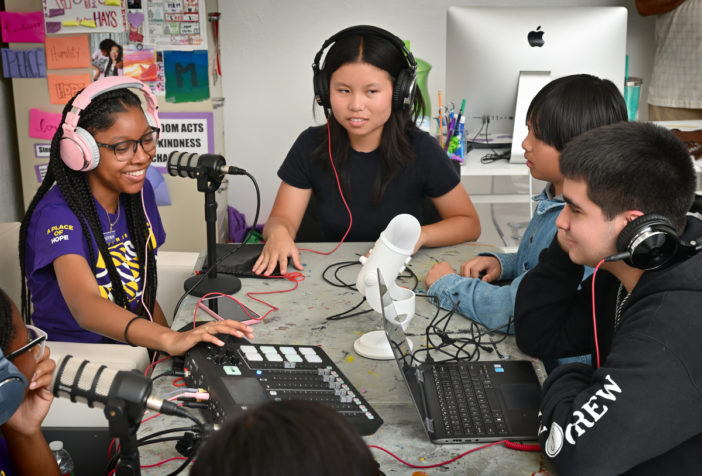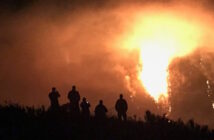In a small sweltering room off the main activity space at the Buena Park Boys and Girls Club, six teenagers crowd around a small table with several microphones and a soundboard. A small window air conditioner fights a losing battle with the heat, while the teens fan themselves and fiddle with the unit’s vents.
However, when they begin talking about the subject of their weekly podcast session, the heat seems to be forgotten.
That’s how it goes with the Tri-City Podcast, a project by the Buena Park, Fullerton, and Anaheim-Cypress Boys and Girls Clubs to produce weekly podcast episodes.
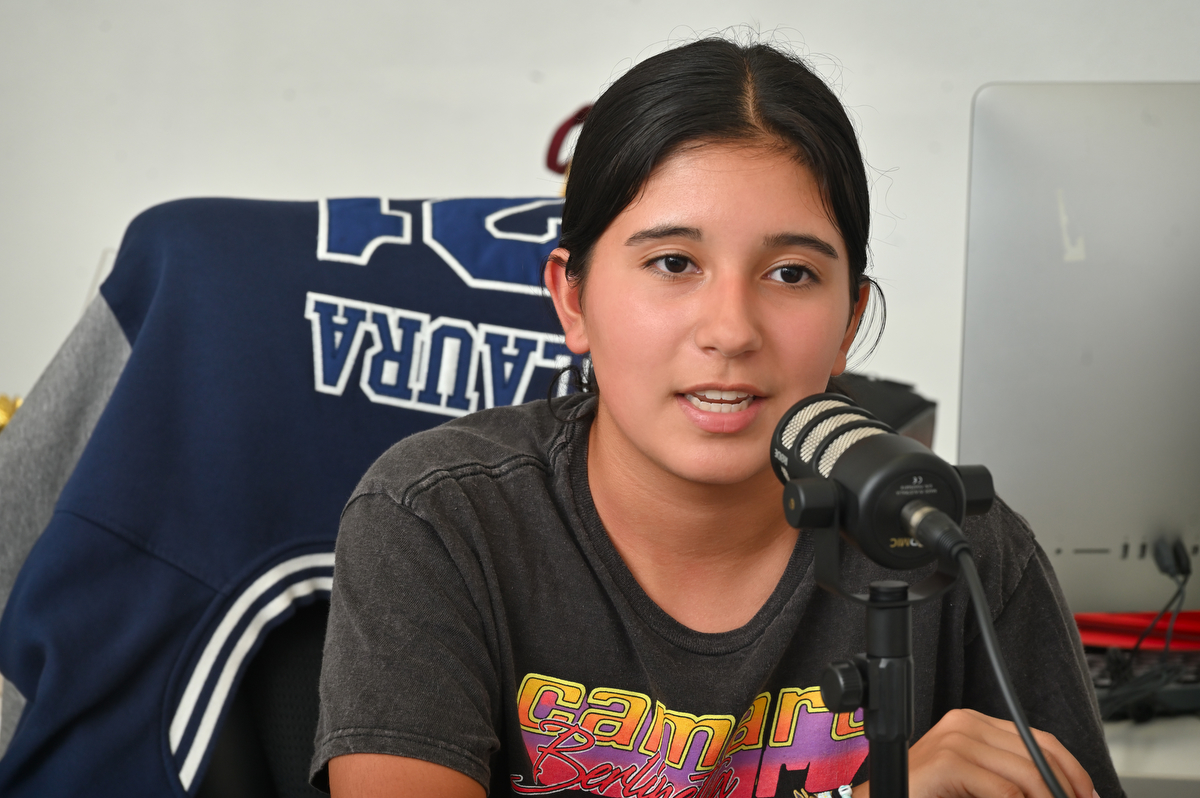
Natalia Simonvski, 13, participates in a group podcast at the Boys & Girls Club of Buena Park on how the COVID-19 pandemic impacted her and her friends.
Photo by Steven Georges/Behind the Badge
In some ways, the podcast has become the modern town square, where listeners gather to hear a variety of viewpoints on the issues of the day. While other platforms can be a cacophony of scattered opinions and viewpoints, podcasts provide focused discussions on specific topics of personal relevance.
This year, the three Orange County Boys and Girls Clubs are capitalizing on the benefits and popularity of podcasts to educate and connect youth.
North OC Public Safety Collaborative grant
The project was launched thanks to funding from the North Orange County Public Safety Collaborative to, according to the funding application by the Clubs, “foster inclusion and diversity of thought and lift up our teens’ voices while promoting meaningful social connection opportunities among youth served by these three clubs.”
In a Monday session at Buena Park, the discussion is all about COVID-19: before, during, and after. It may seem like a topic that has been done and overdone. But the recollection of the pandemic from the perspective of young teens, who range in age from 13-16, is oddly affecting and very different from those of adults.
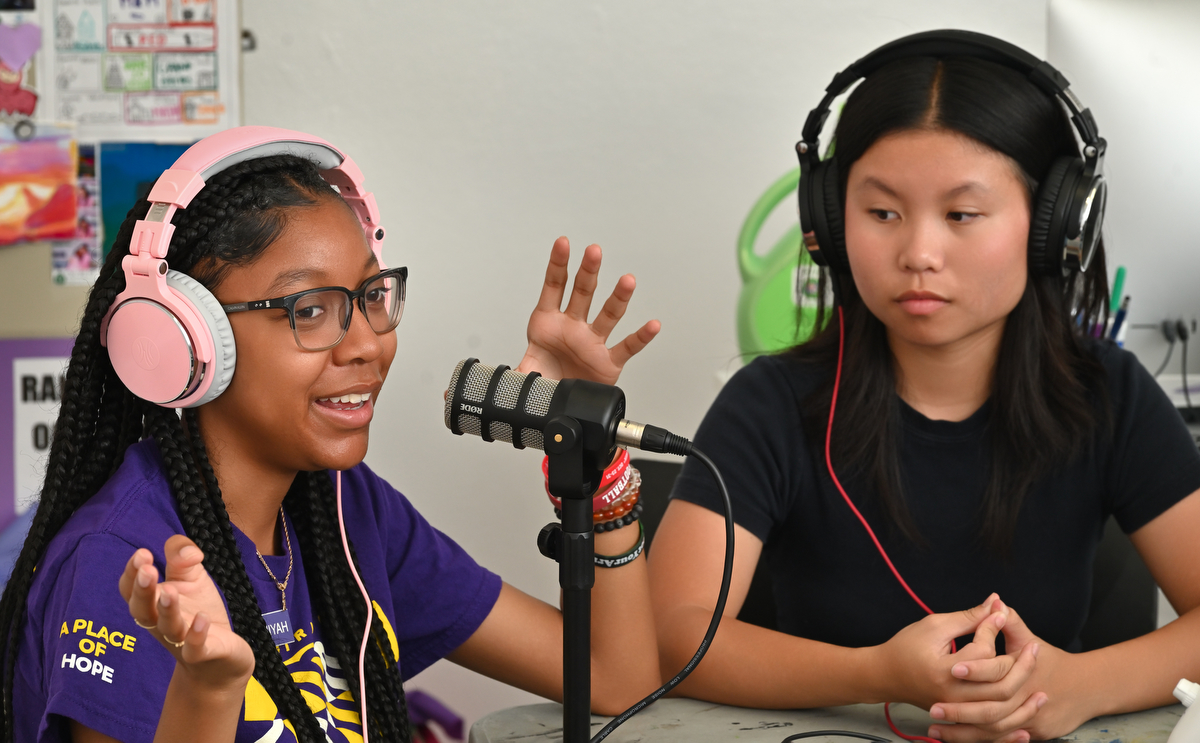
Aniyan Mingo, 16, left, and Sandra Nguyen, 15, participate in a group podcast on the COVID-19 pandemic and how it impacted their lives.
Photo by Steven Georges/Behind the Badge
Over the next 90 minutes, their memories wander from the prosaic – vacations and excursions missed — to occasional intimate and personal reflections of loneliness, confusion, friendships lost, and mental health.
It is a snapshot of teen-hood, at once self-absorbed and self-centered, but also reaching out to make connections and understand the larger world.
Every so often, an unexpected comment kicks the discussion in a different direction.
In the middle of a discussion of good and bad things that came out of the pandemic, with some making the case that there were positives, Don, a 16-year-old, pitches in.
“My dad died. It was the worst time in my entire life,” he says, suddenly knocking the air out of the room.
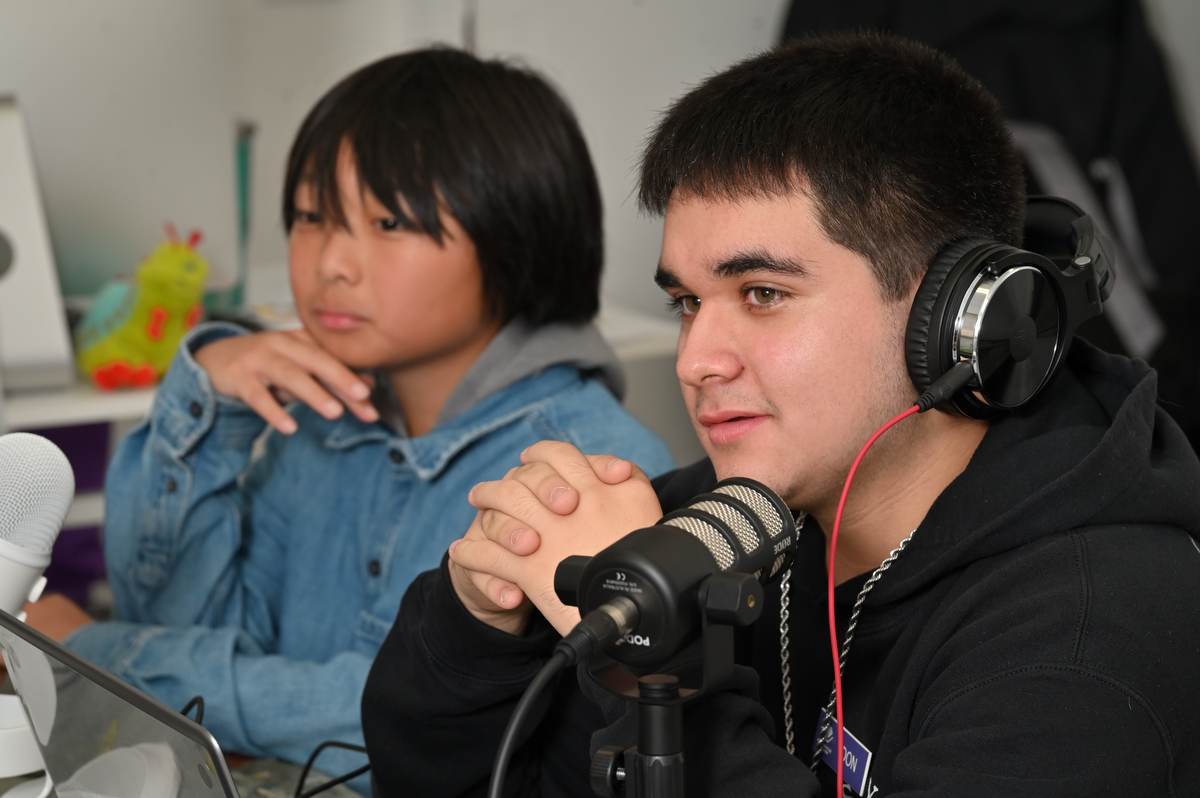
Brandon Tan, 12, left, and Donald Blackwell, 16, give their input during a podcast on the COVID-19 pandemic recorded at the Boys & Girls Club of Buena Park.
Photo by Steven Georges/Behind the Badge
Brett Ackerman, CEO of the Fullerton Boys and Girls Club, says these kinds of interjections are revealing and rewarding.
“It’s interesting to see what the kids are going through and the way they’re feeling,” he said. “This has given them a safe space to talk about what they’re feeling.”
While Don has older sisters who have encouraged him to express his grief, for other kids in the podcasts and listeners such moments can be a start to healing.
Generally, except for occasional minor edits for language, these are the kids and their thoughts unexpurgated.
“It’s been pretty good. So far they really enjoy it,” said Angelica Witter, School Site Coordinator in Buena Park.
“Our podcast has been a labor of love on all levels,” said Luz Valenzuela-Trout, Director of Operations at Buena Park. “This podcast has given our teens a platform to express their opinions, fears, frustrations and hopes for their future in a safe and healthy manner.”
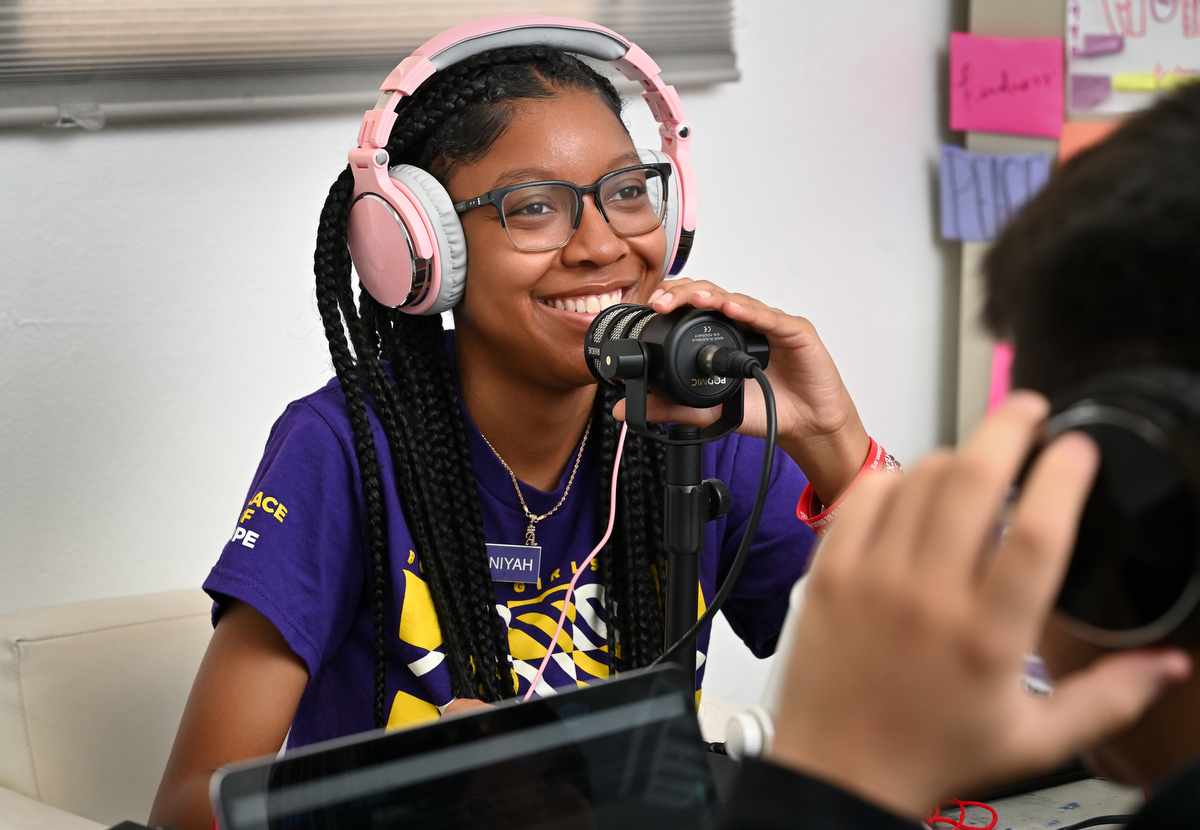
Aniyan Mingo, 16, smiles as she participates in the group podcast at the Boys & Girls Club of Buena Park.
Photo by Steven Georges/Behind the Badge
Popularity grows
When the Buena Park program was launched, Witter said there were three of four stalwarts.
Then word spread about how “OMG” fun it was and now up to a dozen kids will often vie to cram into the little room with the struggling A/C.
“More and more kids are wanting to join,” said Witter.
At Fullerton, the program has grown to a core group of about 10 or more, according to David Mancini, Program Director there.
“We have a lot of kids who want to be (social media) influencers or twitch streamers,” said Mancini, adding that the podcasts are a good starting point.
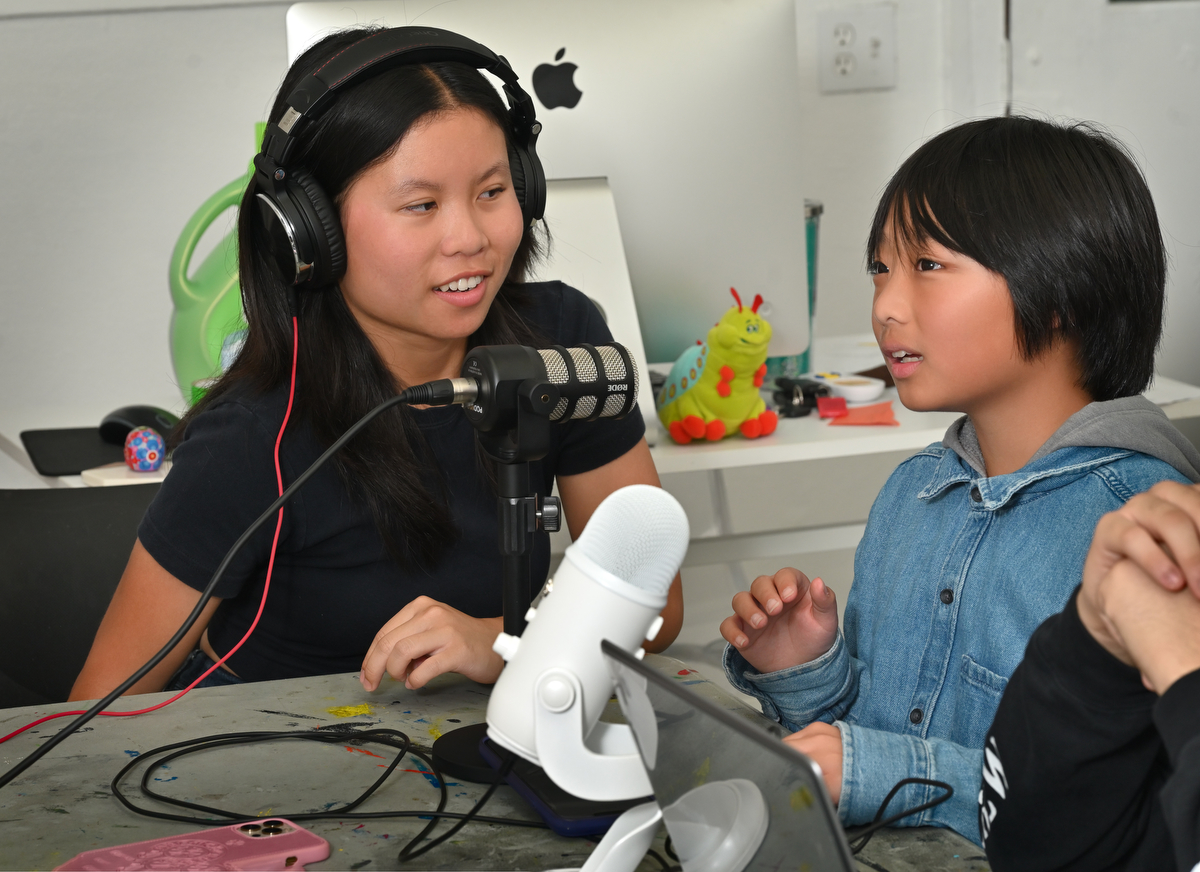
Sandra Nguyen, 15, left, listens as Brandon Tan, 12, talks during a podcast at the Boys & Girls Club of Buena Park on how the COVID-19 pandemic impacted their lives.
Photo by Steven Georges/Behind the Badge
Witter admits that interest can wane substantially when it comes to the less glamorous post-production and editing work.
As the programs advance, it is hoped the teens are able to take over more aspects of productions such as graphics and branding, recruiting and interviewing guest speakers, scripting the show, and recording, editing and publishing their audio files.
As it stands, it falls Boys and Girls Club staffers to do the bulk of the editing.
Some of the teens are starting to pick up tools, however.
“I really like editing video and I really like talking, and listening to other people’s opinions,” Sandra, 15, said. “ I feel like I gained a bond with the other kids and learned a few new skills.”
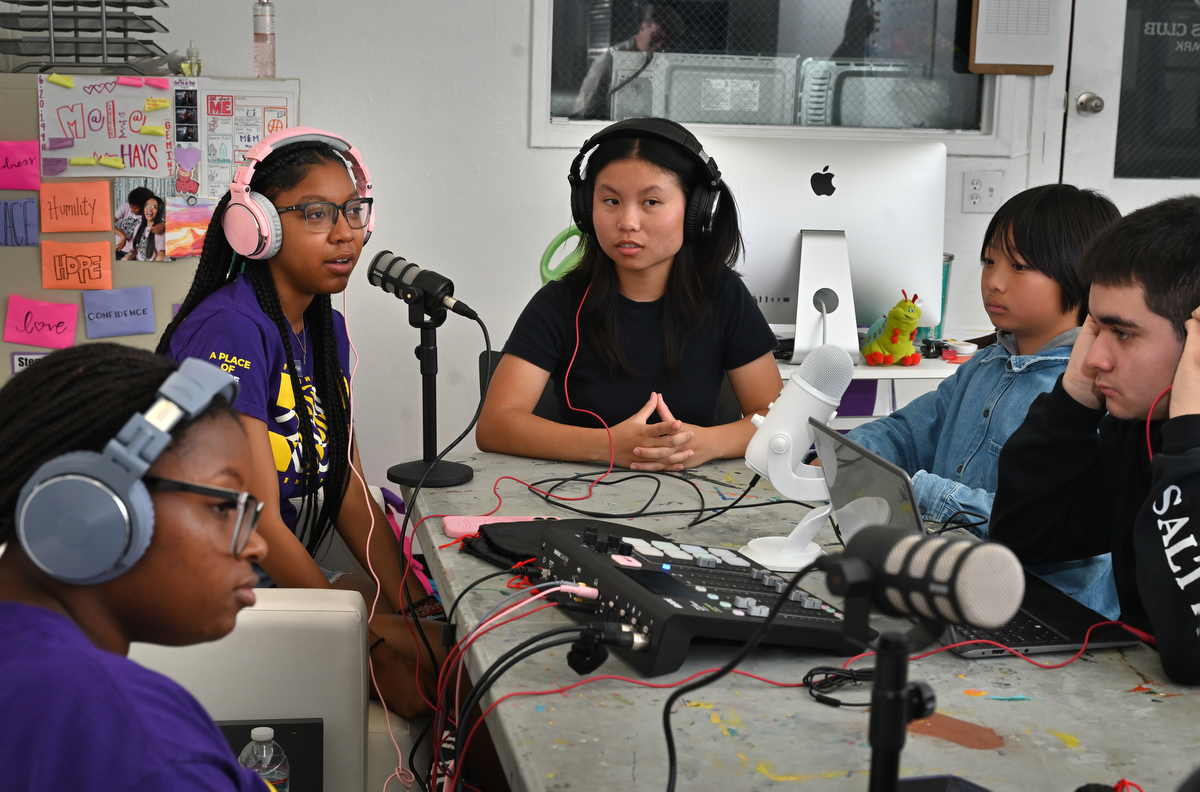
A group of kids from the Boys & Girls Club of Buena Park participant in a group podcast about how the COVID-19 pandemic affected their school life. From left is Kennedy Thompson, 16, Aniyan Mingo, 16, Sandra Nguyen, 15, Brandon Tan, 12, and Donald Blackwell, 16. Just out of the photo is Natalia Simonvski, 13.
Photo by Steven Georges/Behind the Badge
One of the recurring themes in the COVID-19 episode revolved around friendships and how the isolation caused many to rethink and reflect upon the nature of friends.
“I was popular in middle school. I wanted to stay popular so bad,” said Sandra about trying to maintain status in the midst of the lockdown. And then she had a revelation.
“It’s not worth staying popular for people who won’t talk to you once a week. So freshman year I learned what true friends are,” Sandra said.
Later there was a quick-fire exchange about how social circles were altered.
“I can say my friendships changed,” said Aniyah, 16, one of episode co-hosts.
“It showed you who was going to be there for me and who wasn’t,” Natalia, 13, chimed in.
“Friendships changed drastically,” Kennedy, 16, the other co-host added.
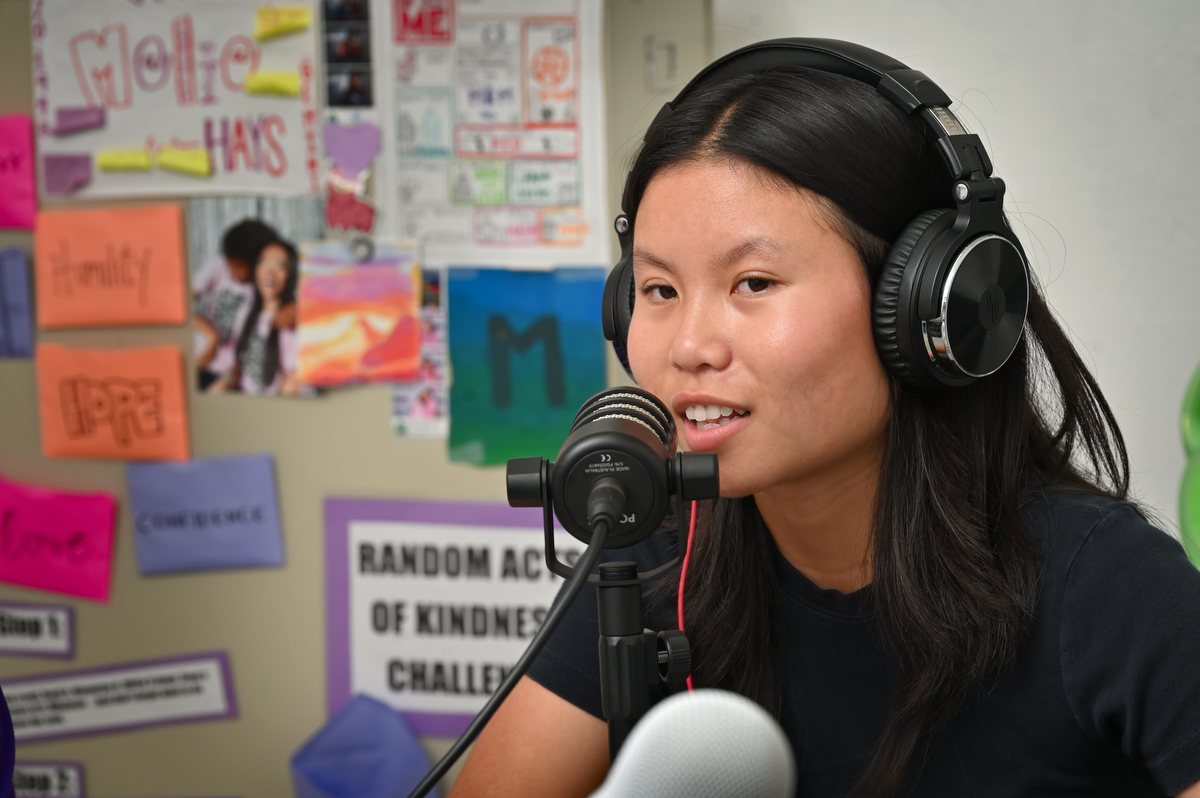
Sandra Nguyen, 15, talks about her experiences with COVID-19 during a podcast recording at the Boys & Girls Club of Buena Park.
Photo by Steven Georges/Behind the Badge
Beyond kibbitzing
Launched in May, the project remains a work in progress.
Each of the clubs develops its programs independently. In Anaheim, for example, a staff member introduces the episodes and moderates. In Fullerton and Buena Park, the only voices you hear are those of the teen members.
“It’s a really neat program,” Ackerman said. “The beauty is the kids take the ideas and run with it.”
“We sit around and throw out ideas,” Witter said of the collaborative process.
Sometimes the episodes are very teen-specific and at times they branch out to larger issues, such as LGBTQ issues during Pride Month in June.
In recent years, podcasts have taken off in popularity and listeners report personal benefits from the programming.
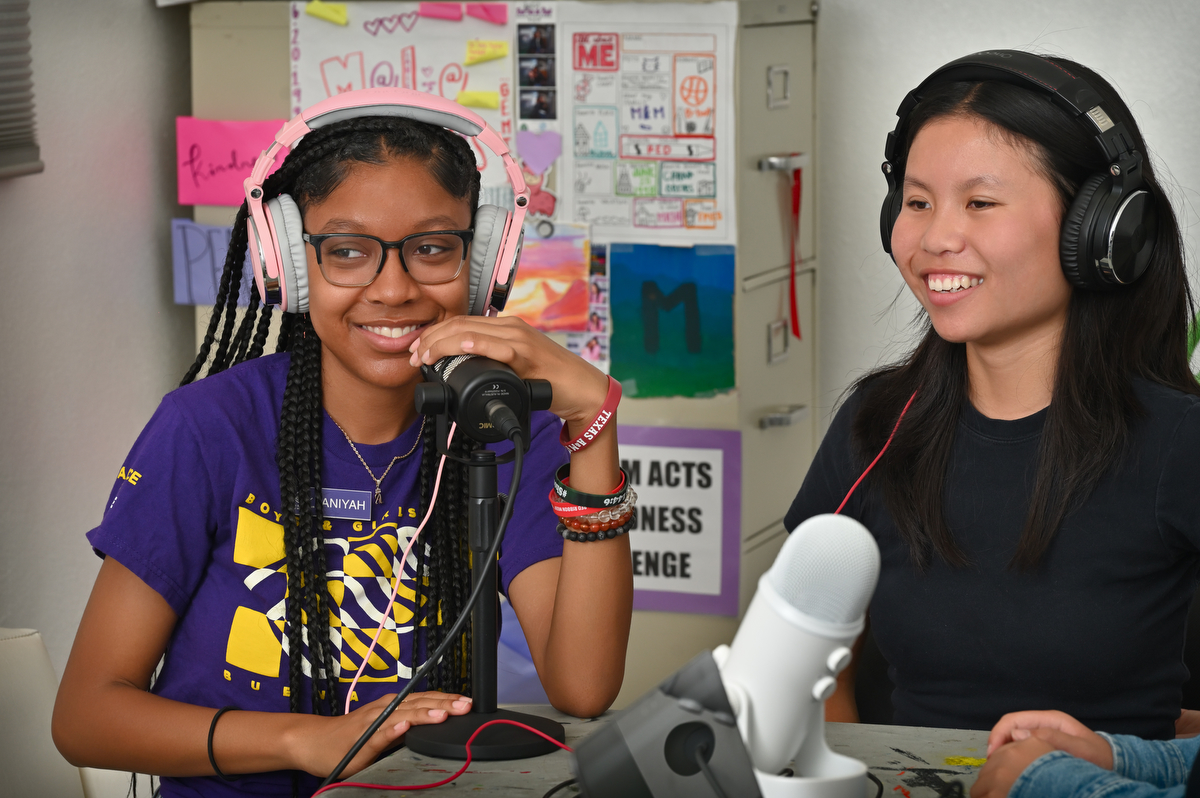
Aniyan Mingo, 16, left, and Sandra Nguyen, 15, give their input during a recording of a podcast at the Boys & Girls Club of Buena Park on how the COVID-19 pandemic impacted the lives of their generation.
Photo by Steven Georges/Behind the Badge
According to a joint survey by iHeartMedia and Publicis Media, 67 percent of listeners say podcasts motivate and inspire them, and more than 70 percent say podcasts educate and teach them.
Podcasts have been around for nearly two decades, but the format has come into its own over the last six years.
Although estimates vary widely, there are about 125 million podcast listeners in the U.S. By some estimates, podcasting could be a $95 billion industry by 2028.
The potential of podcast to engage youth meaningful ways and its proven positive outcomes were integral in the Boys and Girls Clubs application of the grant.
The proposal they noted that, according to the Centers of Disease Control, youth connectedness is a critical protective factor for youth that can reduce the likelihood of a variety of health risk behaviors, including participating in violence.
A Harvard report saw robust social networks as key to eliminating the “loneliness epidemic.”
Additionally the technical skills involved will be valuable in the job market..
In the meantime, the teens at the Boys and Girls Clubs will continue to riff on the things that matter to them. And who knows, maybe change a mind or two, in a good way.
“You might change your own perceptions,” said Natalia.
 Behind the Badge
Behind the Badge
